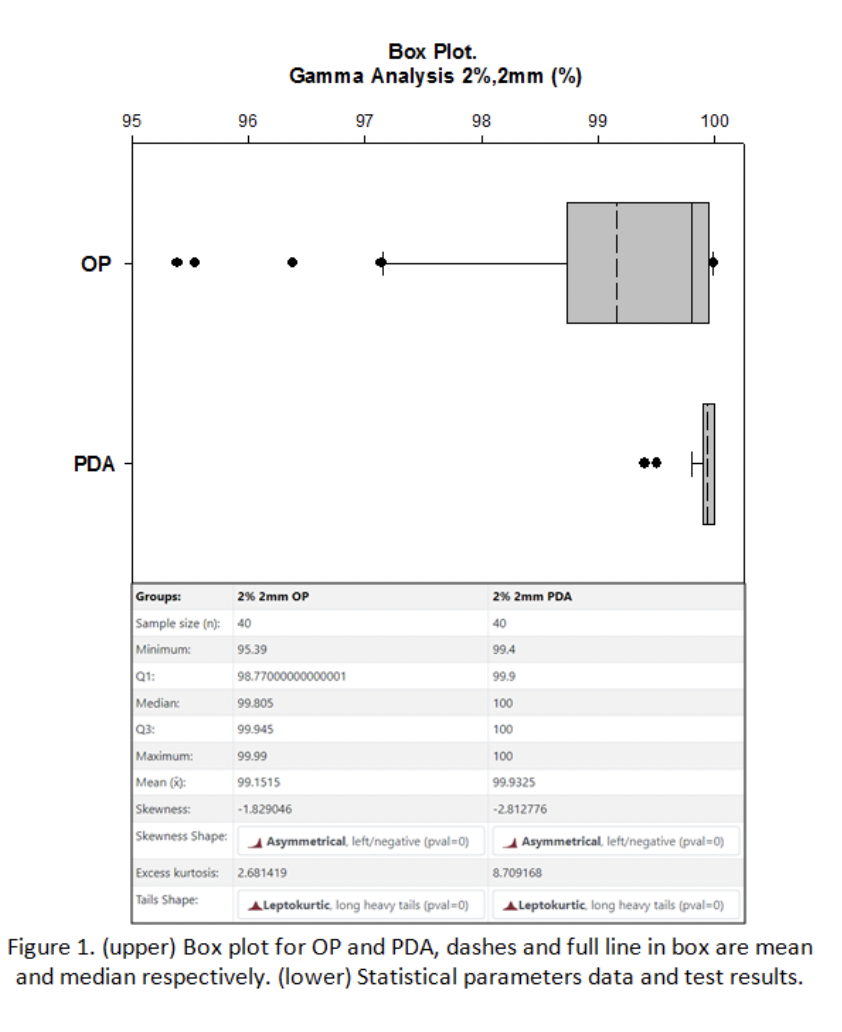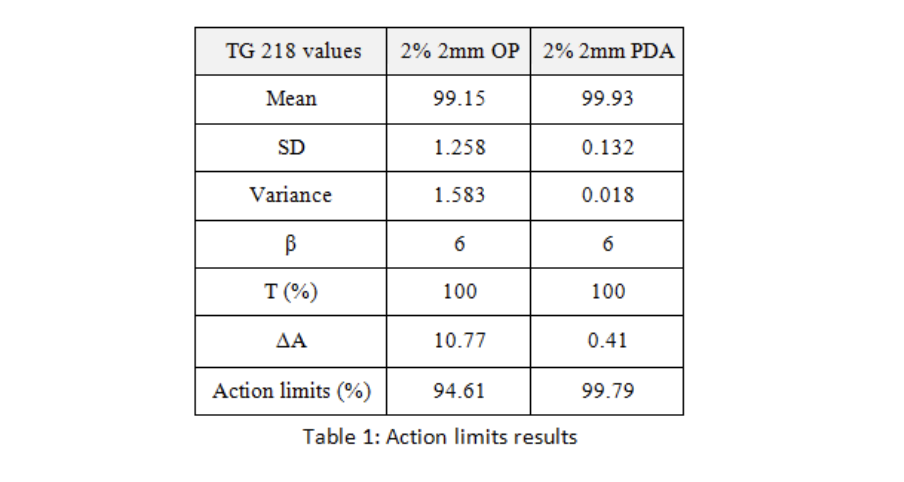Action limits for DQA plans using two different gamma analysis software, Halcyon EPID and Omnipro
CELINE KARLA TORZSOK,
Chile
PO-1772
Abstract
Action limits for DQA plans using two different gamma analysis software, Halcyon EPID and Omnipro
Authors: CELINE KARLA TORZSOK1, Alvaro Ruiz2, Marcelo Ribeiro3,1, Filippo Marangoni1, Rixy Plata4, Jose Luis Rodriguez1, Matias Pino1, Herve Broque1
1Falp Fundacion Arturo Lopez Perez, Radiation Therapy, Santiago, Chile; 2Falp Fundacion Arturo Lopez Perez,, Radiation Therapy, Santiago, Chile; 3Falp Fundacion Arturo Lopez Perez, Radiation Therapy, Santiago,, Chile; 4alp Fundacion Arturo Lopez Perez, Radiation Therapy, Santiago, Chile
Show Affiliations
Hide Affiliations
Purpose or Objective
Nowadays most Linac manufacturers develop embedded dosimetry verification systems aimed at improving DQA efficiency. EPID are blackbox type systems where the end user is not fully trained on the algorithms at play in the analysis. The purpose of this work is to compare a multi-year proven gamma analysis software (IBA OmniPro I´mRT (OP)) in our clinic with the Halcyon E Portal Dosimetry Application (PDA) and determine the action levels when switching between both systems.
Material and Methods
For this work, we selected patients calculated using Accuros XB algorithm in Eclipse TPS (8 SBRT and 32 VMAT)). Firstly, all DQA were calculated in the same TPS, delivered with VMAT, measured using EPID and analyzed using PDA. Secondly, we exported the dose plans and EPID images, in DICOM format to OP and assessed them through 2D Gamma criteria. For both software, we used as per our clinical practice: 2%, 2mm, 10% threshold and an ROI encompassing approximately 30% of the isodose curves. To determine if there is a statistical difference between the two data sets we proceeded to evaluate if they are normally distributed, the selected test was the Kolmogorov-Smirnov normality test (K-S). Given the results, we applied a non parametric test: Wilcoxon Signed Rank Test (WSRT) with the following parameters: significance level 0.05, one tailed hypothesis and the null hypothesis (that the two distributions were exchangeable). Finally, we calculated the action limits for both software using the AAPM TG 218 formalism ( § 8, equation 45).
Results
The two distributions, using K-S, are not normal shaped (Skewness<0) and asymmetric (Kurtosis>0). The result of the evaluation, using WSRT, showed that the null hypothesis is refuted. This means that the two distributions are not similar. WSRT conclusions are strengthened by the boxplot graph (Fig.1).

Conclusion
Even though the inspected data are the same, there is clear evidence the two distributions are not exchangeable. This leads us to establish different action limits for each software, as shown in table 1.
The disparities we observed might stem from differences between the two gamma analysis algorithms that PDA and OP use. Our work suggests that, if not well understood, applying AAPM TG 218 tools, could mislead the end user towards misinterpretation of the DQA results.
For future developments, our aim is to generate known errors in order to check for the sensitivity of the two systems and reach a better understanding of the PDA algorithm. So far, the obtained PDA distributions are compacted to the upper limits of the measurement scale.